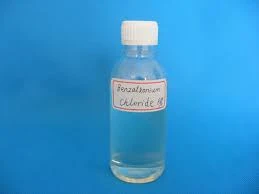use of poly aluminium chloride in water treatment
The Use of Poly Aluminium Chloride in Water Treatment
Water is one of the planet's most essential resources. With increased industrial activity, urbanization, and population growth, the demand for clean and safe drinking water has surged. Water treatment processes have evolved significantly to address these challenges, and among the various coagulants used in the treatment of water, Poly Aluminium Chloride (PAC) stands out for its effectiveness and efficiency.
Poly Aluminium Chloride is a high-performance inorganic coagulant that is widely utilized in water treatment facilities for its ability to effectively remove suspended particles and impurities. It is a polymeric compound formed by the hydrolysis of aluminum chloride in the presence of a basic medium, usually sodium hydroxide. This unique composition allows PAC to have superior coagulation properties compared to traditional coagulants such as aluminum sulfate (alum).
One of the key advantages of using PAC in water treatment is its higher charge density. The positive charge on the PAC molecules effectively neutralizes the negative charges on the suspended particles in water, facilitating their aggregation into larger flocs. These larger flocs can then be more easily removed through sedimentation or filtration processes. The rapid precipitation of flocs means that PAC can achieve clearer effluent water in a shorter amount of time compared to other coagulants.
Moreover, the versatility of PAC allows it to be used in a variety of water treatment applications, including municipal drinking water treatment, wastewater treatment, and in industrial processes. Its effectiveness in a wide range of pH levels and temperatures makes it a suitable choice for different environmental conditions. This adaptability is particularly advantageous in regions where water quality can vary significantly.
use of poly aluminium chloride in water treatment

The use of PAC also leads to reduced sludge production. Traditional coagulants often produce large amounts of sludge, which can pose disposal challenges and increase operational costs for water treatment plants. In contrast, PAC generates less sludge because it forms more compact flocs, improving the efficiency of the overall water treatment process. This characteristic not only minimizes waste management concerns but also aids in lowering the operational costs associated with sludge handling and disposal.
Furthermore, PAC is noted for its lower dosage requirement compared to conventional coagulants. A smaller quantity of PAC can achieve the same or even better results as larger amounts of alum, thereby presenting a cost-effective solution for water treatment facilities. This also means that the chemical footprint of treatment processes is minimized, leading to lower chemical costs and reduced environmental impact.
Another significant benefit of using PAC is its ability to effectively remove pathogens, including bacteria and viruses, from water. This is particularly important in the context of public health, as ensuring the microbiological quality of drinking water is critical to preventing waterborne diseases. The coagulation process not only facilitates the physical removal of these pathogens but also reduces the chlorine demand for disinfection, making the water treatment process more efficient and cost-effective.
However, while PAC offers numerous advantages, it is important to consider its impact on water quality. The residual aluminum content in treated water has raised concerns regarding potential health effects. Regulatory bodies monitor aluminum concentrations in drinking water and set guidelines to ensure safety. Therefore, it is crucial for water treatment plants to conduct regular testing and adopt appropriate measures to minimize aluminum levels in the final effluent.
In conclusion, Poly Aluminium Chloride has emerged as a vital component in modern water treatment practices. Its excellent coagulation properties, reduced sludge production, cost-effectiveness, and ability to remove pathogens make it an indispensable tool for treating water efficiently. As we continue to grapple with water scarcity and pollution challenges, the adoption of effective and sustainable water treatment solutions such as PAC will play an essential role in safeguarding this precious resource for future generations. Through innovation and responsible use of chemicals in water treatment, we can ensure the availability of clean water, contributing to better health outcomes for communities worldwide.
-
Water Treatment with Flocculant Water TreatmentNewsJun.12,2025
-
Polymaleic AnhydrideNewsJun.12,2025
-
Polyaspartic AcidNewsJun.12,2025
-
Enhance Industrial Processes with IsothiazolinonesNewsJun.12,2025
-
Enhance Industrial Processes with PBTCA SolutionsNewsJun.12,2025
-
Dodecyldimethylbenzylammonium Chloride SolutionsNewsJun.12,2025





